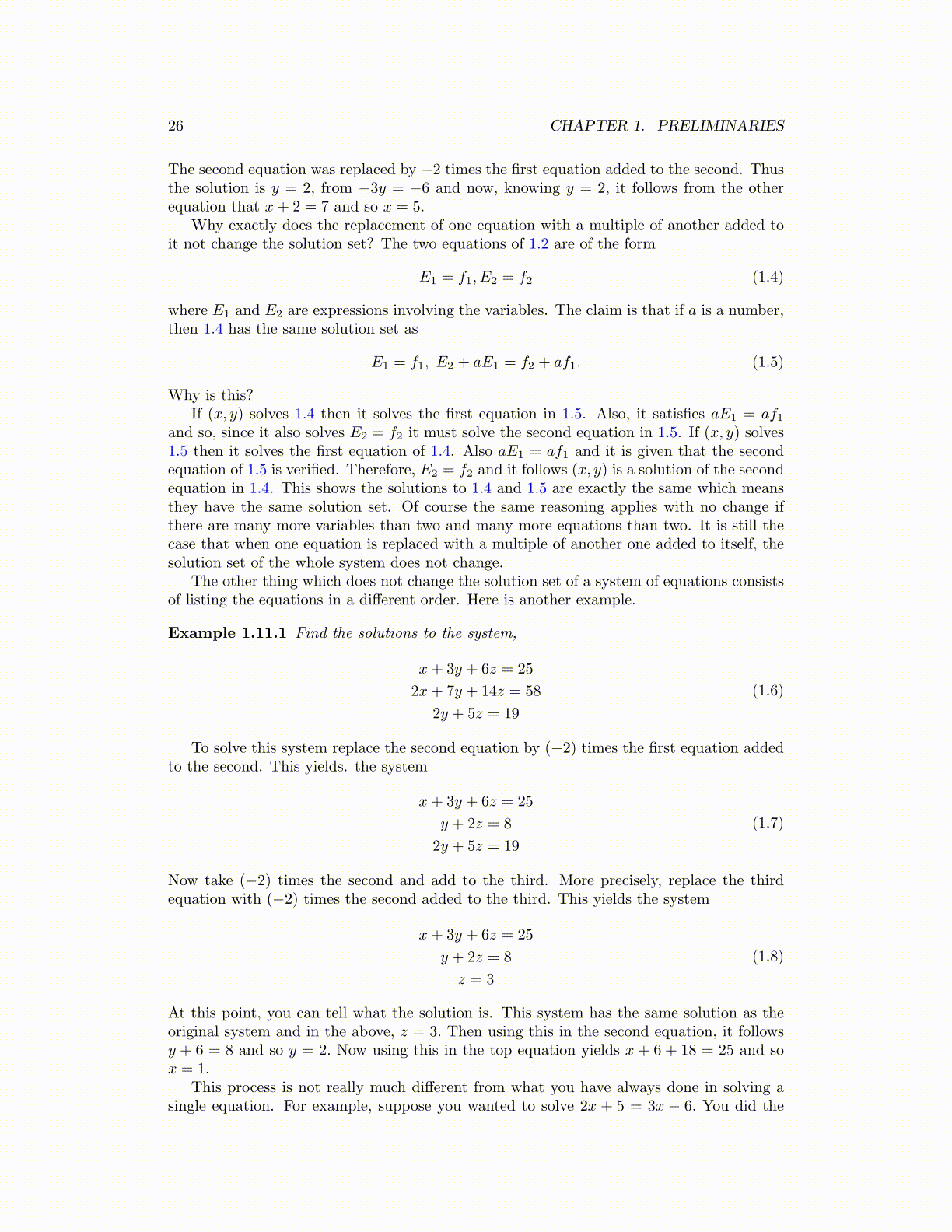
26 CHAPTER 1. PRELIMINARIES
The second equation was replaced by −2 times the first equation added to the second. Thusthe solution is y = 2, from −3y = −6 and now, knowing y = 2, it follows from the otherequation that x+ 2 = 7 and so x = 5.
Why exactly does the replacement of one equation with a multiple of another added toit not change the solution set? The two equations of 1.2 are of the form
E1 = f1, E2 = f2 (1.4)
where E1 and E2 are expressions involving the variables. The claim is that if a is a number,then 1.4 has the same solution set as
E1 = f1, E2 + aE1 = f2 + af1. (1.5)
Why is this?If (x, y) solves 1.4 then it solves the first equation in 1.5. Also, it satisfies aE1 = af1
and so, since it also solves E2 = f2 it must solve the second equation in 1.5. If (x, y) solves1.5 then it solves the first equation of 1.4. Also aE1 = af1 and it is given that the secondequation of 1.5 is verified. Therefore, E2 = f2 and it follows (x, y) is a solution of the secondequation in 1.4. This shows the solutions to 1.4 and 1.5 are exactly the same which meansthey have the same solution set. Of course the same reasoning applies with no change ifthere are many more variables than two and many more equations than two. It is still thecase that when one equation is replaced with a multiple of another one added to itself, thesolution set of the whole system does not change.
The other thing which does not change the solution set of a system of equations consistsof listing the equations in a different order. Here is another example.
Example 1.11.1 Find the solutions to the system,
x+ 3y + 6z = 25
2x+ 7y + 14z = 58
2y + 5z = 19
(1.6)
To solve this system replace the second equation by (−2) times the first equation addedto the second. This yields. the system
x+ 3y + 6z = 25
y + 2z = 8
2y + 5z = 19
(1.7)
Now take (−2) times the second and add to the third. More precisely, replace the thirdequation with (−2) times the second added to the third. This yields the system
x+ 3y + 6z = 25
y + 2z = 8
z = 3
(1.8)
At this point, you can tell what the solution is. This system has the same solution as theoriginal system and in the above, z = 3. Then using this in the second equation, it followsy + 6 = 8 and so y = 2. Now using this in the top equation yields x + 6 + 18 = 25 and sox = 1.
This process is not really much different from what you have always done in solving asingle equation. For example, suppose you wanted to solve 2x + 5 = 3x − 6. You did the